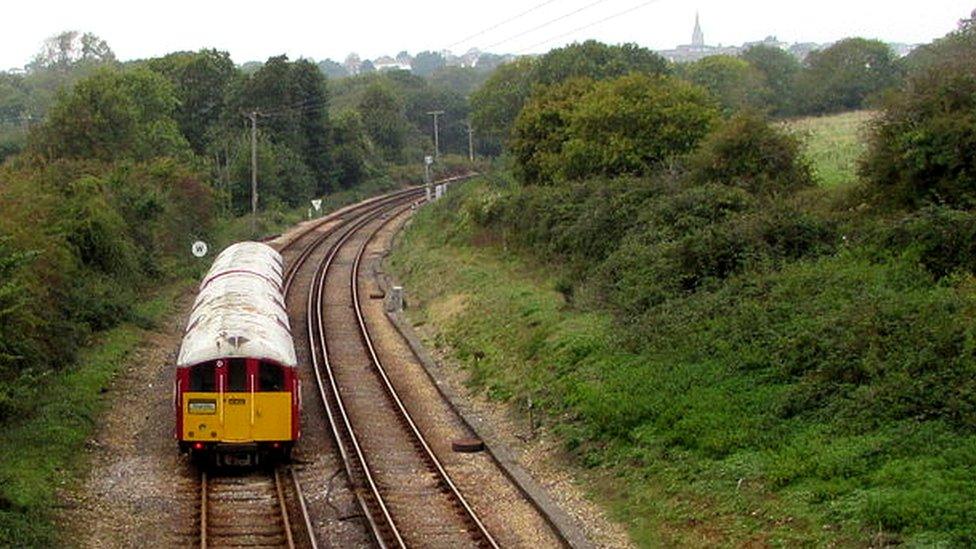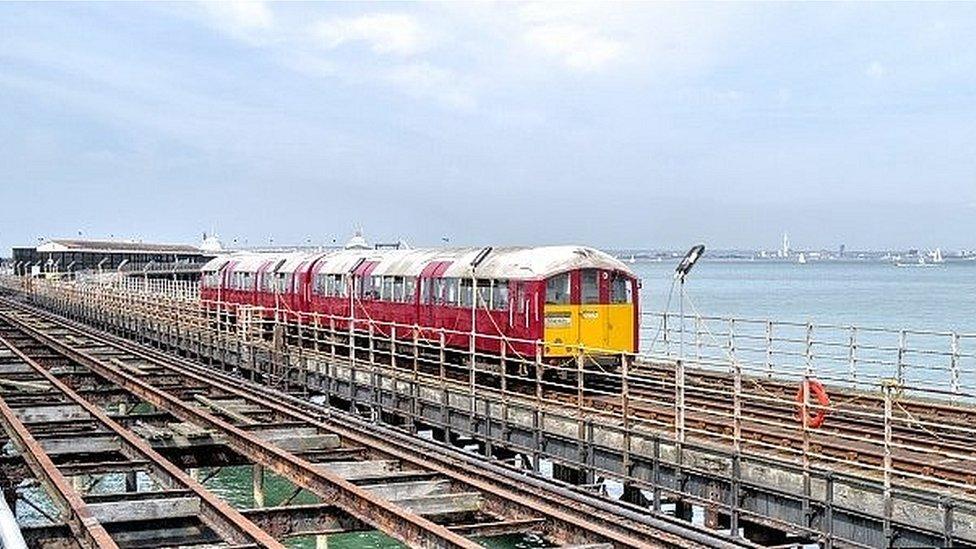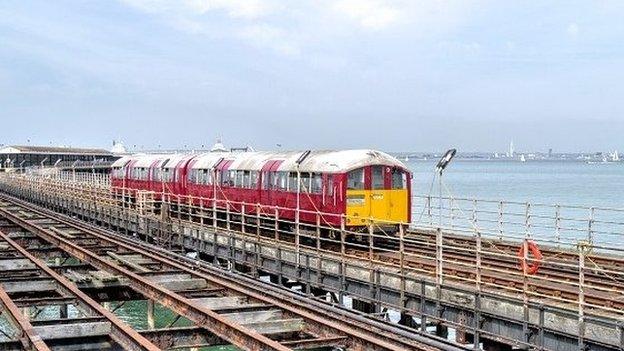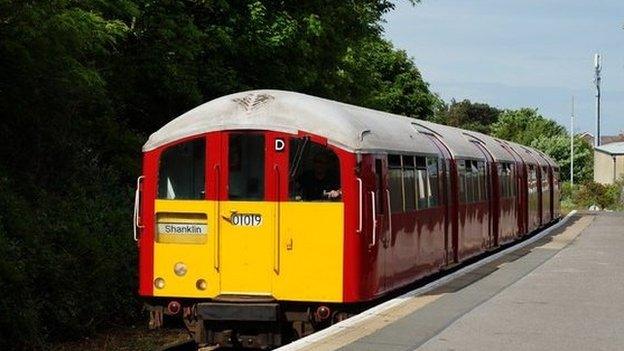Tram plan to replace Isle of Wight rail line
- Published

Passenger trains on the Island Line are former London Underground stock
Trams could be the answer to saving a dilapidated Isle of Wight rail line, a council-commissioned report has stated.
The Island Line between Ryde and Shanklin, which can only run using old tube trains, could be dug up to be replaced with the "light rail" service.
With passenger numbers falling and annual £3.5m losses, trams would be more "efficient" and "low cost".
The report comes after the government announced plans to remove the service from the next regional train franchise.

The Island Line on the Isle of Wight operates between Ryde Pier head and Shanklin
The track and entire 1938 train stock on the Island Line needs replacing, but only London Underground trains can run on the line because of the height of Ryde tunnel.
The next second-hand tube trains small enough to fit through the tunnel will not be available for another decade.
The service, which costs an annual £4.5m to run for a £1m return, depends on subsidies from other profitable parts of the rail network.
The Department for Transport (DfT) said bidders for the next South Western rail franchise would be asked to turn the line into a self-sustaining business.
Author of the independent report, Christopher Garnet, a rail expert who lives on the island, was asked by the Isle of Wight Council to come up with cost-effective ways to keep the service running.
He said: "Trams are cheaper to operate than trains, and it might well be a low cost solution going forward."
He said overhead power wires, with simplified signalling, would cost no more than refurbishing the route to mainline standards.
Council leader Jonathan Bacon said the tram option would "significantly reduce costs but still make for an efficient and quick service that provides the link that we need".
The report's findings will be discussed by councillors this month.
The line runs 8.5 miles (13.7km) from Shanklin to Ryde Pier Head, where it connects with passenger ferries to Portsmouth Harbour.

Paul Clifton - BBC South transport correspondent
The tube trains are almost 80-years-old - twice the age of any other rolling stock in daily use. Spare parts are hard to come by, and these museum pieces really cannot rattle on much longer.
The track is rough: the trains bounce around. It wouldn't be acceptable anywhere else. For decades the policy here has been to patch and mend.
Christopher Garnett believes replacing ancient trains with second-hand trams is financially viable.
Overhead power lines would be needed, and fitting them in Ryde tunnel would be a tight squeeze. But trams would be much cheaper to run. So if the line has to be refurbished anyway, doing it for trams instead of trains makes sense.

- Published14 October 2015

- Published12 August 2015

- Published29 July 2015
